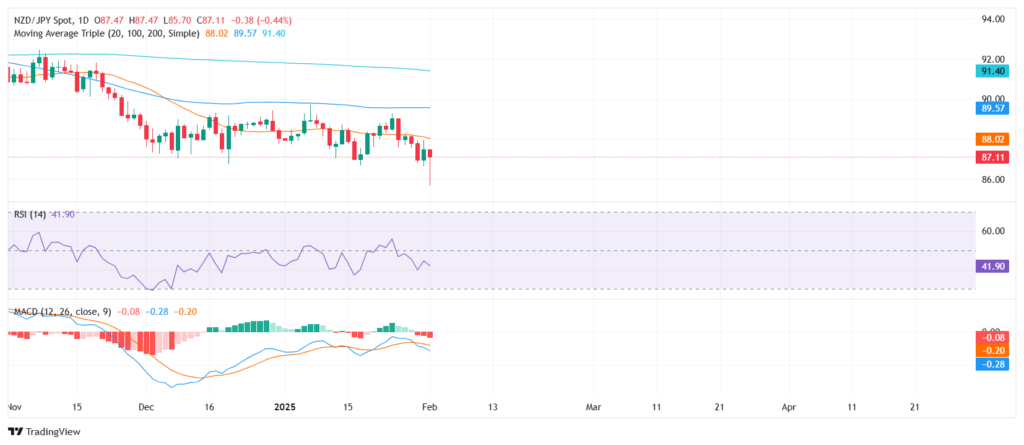The New Zealand dollar plunged to a multi-month low against the Japanese yen on Thursday, driven by a sharp shift in global risk sentiment and broad-based demand for safe-haven assets. However, the pair managed to stage a partial rebound later in the session as investor sentiment stabilized and traders capitalized on oversold conditions.
The initial sell-off in NZD/JPY was fueled by concerns over slowing global growth and heightened market volatility, which bolstered the appeal of the yen as a traditional safe haven. Adding to the pressure, expectations of a more hawkish stance from the Bank of Japan (BoJ) and weaker commodity prices weighed heavily on the kiwi, which is sensitive to shifts in risk appetite.

Despite hitting fresh lows, the pair found support near key technical levels, triggering a recovery as risk sentiment improved slightly. A modest pullback in Japanese government bond yields and renewed interest in carry trades helped the New Zealand dollar regain some lost ground, although gains remained capped by persistent market uncertainty.
Looking ahead, traders will focus on economic data releases from both Japan and New Zealand, as well as potential shifts in central bank policy expectations. Any signs of BoJ policy adjustments or further deterioration in global risk conditions could keep NZD/JPY under pressure, while stronger economic data from New Zealand may offer limited upside.
For now, NZD/JPY remains vulnerable, with the rebound reflecting a technical correction rather than a clear trend reversal. The pair’s near-term direction will likely hinge on broader market dynamics, including changes in risk sentiment, interest rate differentials, and central bank guidance.













